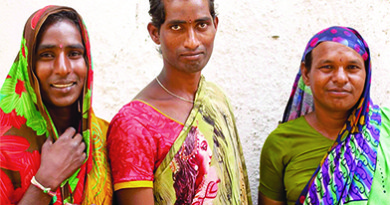Swatchh Out! There may be trouble ahead in meeting Modi’s agenda
It is impossible to criticize the intent behind Swachh Bharat Abhiyan, Prime Minister Modi’s Clean India Mission. The vision of a country that raises itself above open defecation and wide spread residential pollution is an idea whose time has come. Some criticism might be directed, however, at the early efforts to achieve its aims.
Swachh Bharat Abhiyan has the potential to both improve the health of a nation and unleash the amazing potential that is locked in impoverished communities nationwide. It has that potential but only if it is delivered to a considered plan. Initial feedback from some regions suggests that by focussing on easy to achieve metrics, the people trying to help maybe actually doing more harm than good in the long term.
Take Kerala State for instance on the western edge of the Southern part of India. [Insert map of Kerala state?]. According to Dr Vasuki, Executive Director of the Sanitation Mission of the Government of Kerala, although the state has an impressive coverage number for toilets in the state (97-98% of the population now have access to a toilet and do not need to resort to open defecation), there is now an increasing problem with the toilet contents finding its way into ground water. Gorundwater pollution is a big and increasing problem for them.
“In the rush to showcase the numbers we shouldn’t be going for very ad-hoc solutions.” Dr Vasuki said recently at the SACOSAN Conference (South Asia Conference on Sanitation) . “Whatever toilets we are constructing we should ensure that it is an ultimate solution in itself.”
The kinds of problems that Dr Vasuki is alluding to were recently highlighted in a the article Toilet Tales from the Field on the Guardian.com website where a visit to a Global Sanitation Fund (GSF) and Water Supply and Sanitation Collaborative Council (WSSCC) funded project in Cambodia highlighted the success of a pit latrine installation program. It also noted the lack of a plan for what to do with the waste when the pit latrines filled up. Dumping the raw waste at that point is potentially more environmentally hazardous that the original open defecation routines because the waste is now more concentrated. As Dr Vasuki said waste collection and waste disposal/treatment need to be addressed in one solution and that doesn’t seem to be happening.
Coming up with that all-in-one solution is not easy. Pit latrines are a rural solution and it is impractical to consider installing typical sewage treatment plants in each community. Not only would the capital costs be crippling but there are simply not enough qualified engineers to manage and maintain the systems. Even if there was enough money to afford the civil engineering and on-going operational budgets it would be many years before there were sufficient installations delivered to make the kind of difference that Mr Modi is seeking by 2020.
Fortunately there are efforts already underway in Richmond, BC to design a self-contained septic treatment system that can both capture and clean septic waste, at least to the point where the environment will not be overwhelmed by the output. “Our goal is to eventually provide sufficient cleaning capacity within one of these units that the water can be reused within the community.” says inventor David Jones. There are no plans to create drinking water from the toilet waste but the uses of the cleaned water range from dish and clothes washing, to house cleaning and growing vegetables. “We can make a gallon of water go a lot further than it ever has by enabling it to be recycled” said Jones. This removes the need for people to choose how to use their water. For instance , they can bathe their baby today and bathe themselves tomorrow using the same water without a risk to their health.
What is needed now is the piloting of technologies like Jones’ in at-need areas of India to demonstrate how water can be treated very differently today than it was in the past. The physical installations, along with sanitation education offer the single biggest step-up in quality of life for people who need it the most. From water and hygiene scarcity to abundance in one simple step.
Using emerging technology like Jones’, with some ingenuity and not a little effort India has the potential to take the lessons it has learned by embracing Swachh Bharat Abhiyan a little too quickly and create a future where even the poorest communities could have flushing toilets.
That’s a vision that it is likely even better what Mr Modi had in mind when he first committed to the Clean India Mission.
Rupert Whiting



